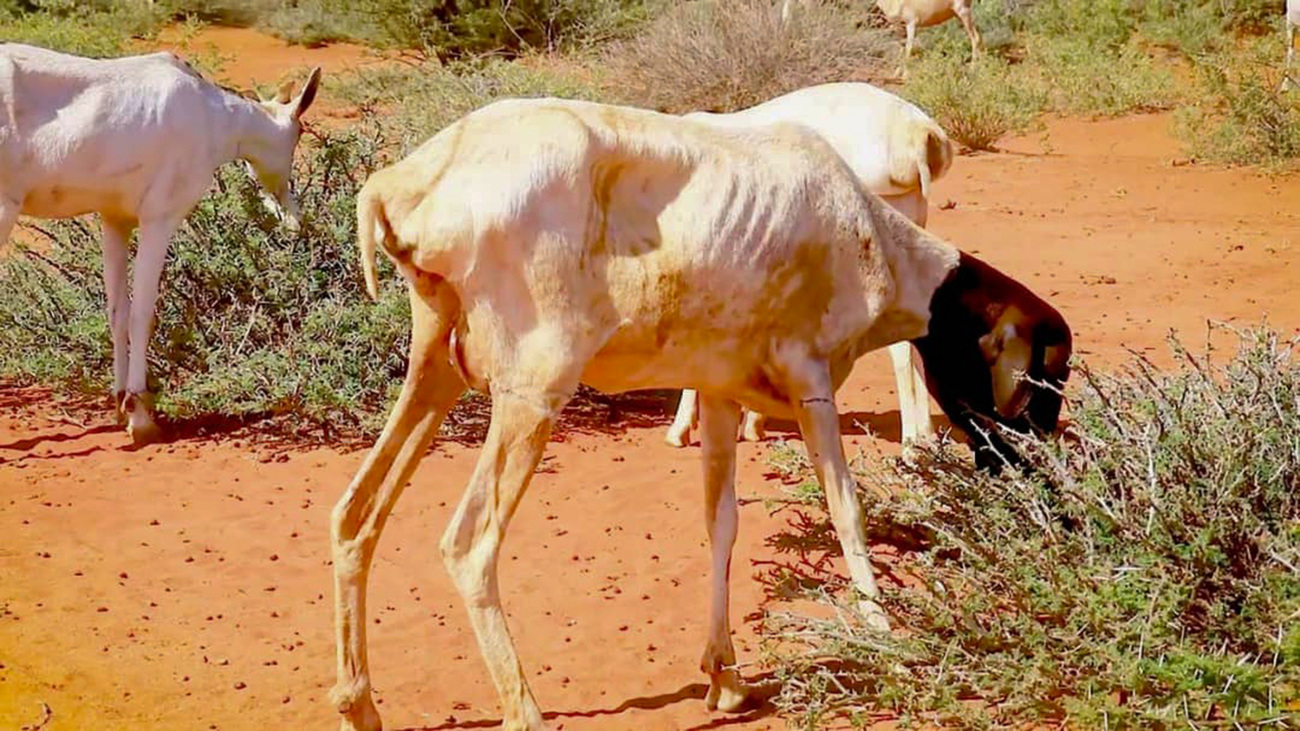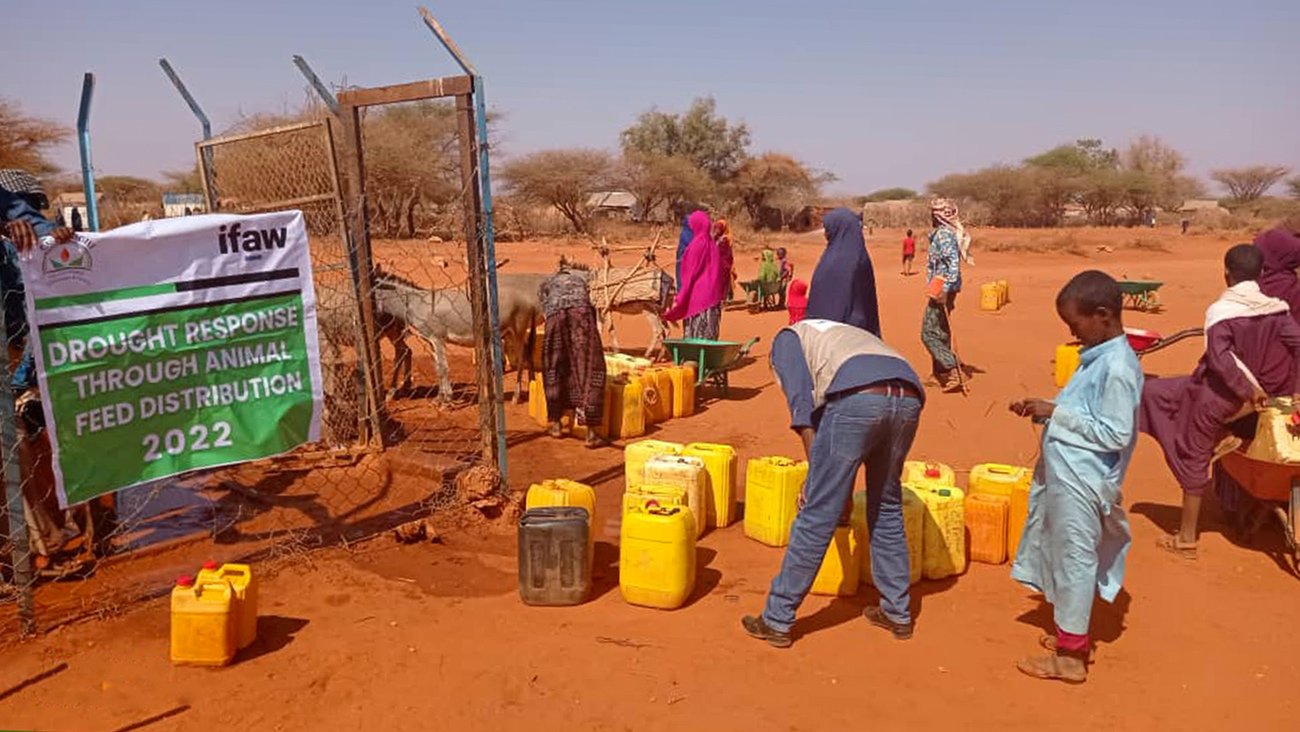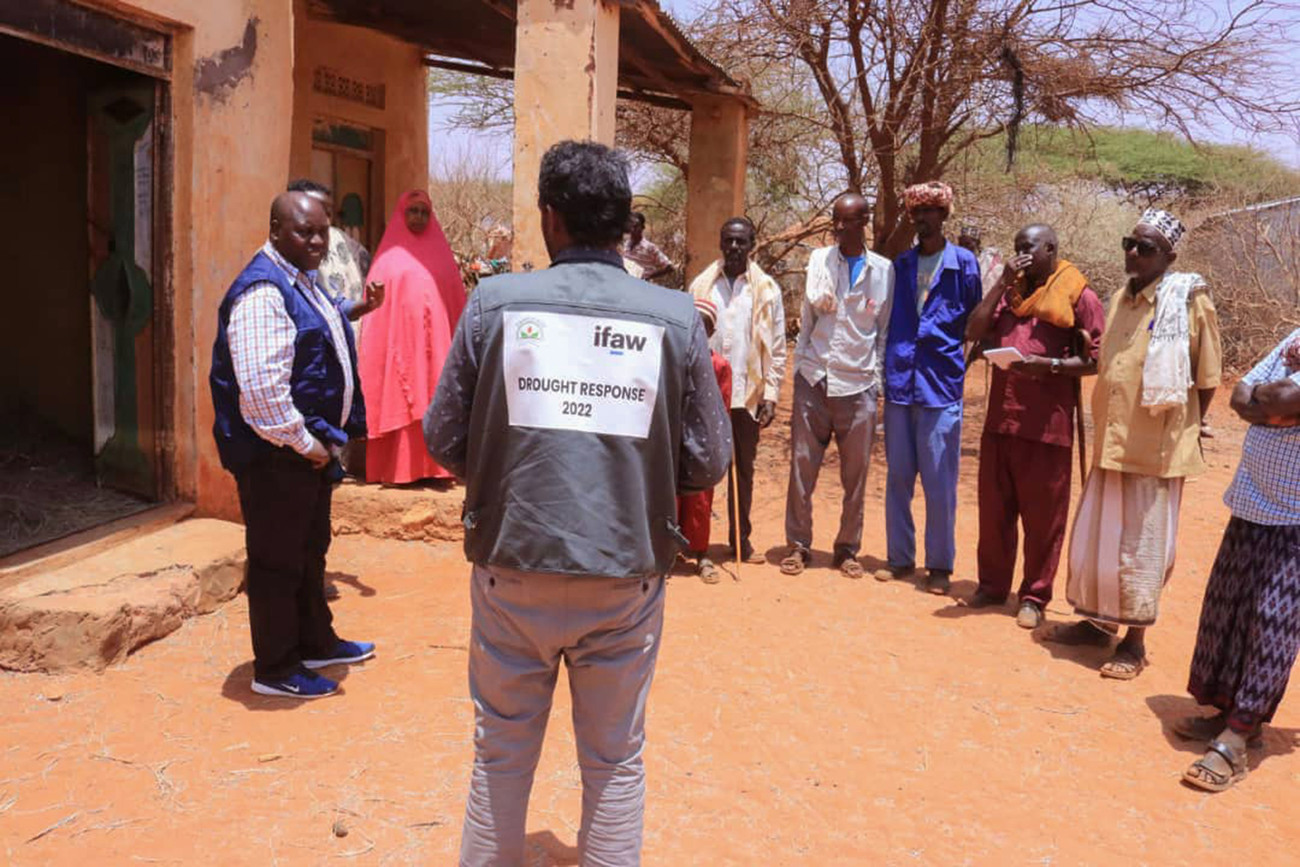Blog
These animals have some of the biggest eyes in the world
Read moreifaw responds to disaster in Somaliland as water scarcity destroys livelihoods

Back in 2020, statistics showed that Somaliland is at most risk of drought, followed by Zimbabwe, Djibouti and South Africa. In 2022, news erupted worldwide that the people of Somaliland are on the “brink of death,” and the Drought Rescue Committee reported that severe drought conditions have displaced 810,000 people, and decimated crops and livestock.
For some countries, wildfires, droughts and floods are seasonal. However, due to climate change, we are witnessing how they are becoming more frequent, longer and more extreme around the world.
After three consecutive failed rainy seasons since October 2020, 59% of households reported they had lost all their livestock, forcing them to abandon their livelihoods and move to towns, according to surveys carried out by HAVOYOCO among people displaced by drought in the Togdheer, Sool and Sanag regions of Somaliland. Many animals died due to lack of pasture and water, while others were sold in desperation as pastoralists tried to raise enough money to support their families as food and water prices skyrocketed.

IFAW researched and evaluated the situation, as the dire circumstance in Somaliland called for immediate support. From a bleak place came Candlelight, a local humanitarian charity in Somaliland working on the ground to support people and animals—the same mission as IFAW.
We rolled our sleeves up together and provided emergency water trucks for both livestock and household consumption—a total of 605 barrels of water (121,000 liters) for 300 individuals, and 555 core-breeding small ruminants (sheep, goats, and donkeys), in Ceeg, Warcibran, Fiqi-ayub, Haji-Salah and Duruqsi villages of Somaliland.
Thin resources available to the local communities resulted in emergency level acute food insecurity. With the help of Candlelight, IFAW hired five trucks, each transporting 162 bales of pasture forage to the project’s target villages. The delivery ensured sustainability during the drought season and the survival of livestock.
A crucial part of responding to the animals and people was learning about the villages affected, and reaching out to the committees to understand how we could help.
Candlelight conducted numerous mobile community trips to meet with committee members, including elders, village committee and elites. They discussed solutions so that we could tailor our plans according to their needs. Candlelight signed a Memorandum of Understanding (MoU) with each target village committee indicating their roles in helping us reach affected households.

Drought poses many far-reaching health implications, and the chronic nature of drought will result in long-term public health problems. Water shortages and poor-quality drinking water will affect air quality, sanitation, and hygiene, and food and nutrition—leading to more diseases, such as West Nile Virus, carried by mosquitoes breeding in stagnant water.
In periods of limited rainfall, human and animal behavior can change in ways that increase the likelihood of other vector-borne diseases. For instance, during dry periods, wild animals are more likely to seek water in areas where humans live. These behaviors increase the likelihood of human contact with wildlife, the insects they host, and the diseases they carry. Ultimately, this will trigger human-wildlife conflict, which will prompt adverse practices that result in the endangerment of lives—for both humans and wild animals.
Our work can’t get done without you. Please give what you can to help animals thrive.
Unfortunately, the browser you use is outdated and does not allow you to display the site correctly. Please install any of the modern browsers, for example:
Google Chrome Firefox Safari